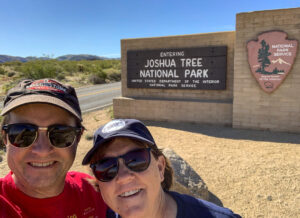 It’s a sin that we had never visited Joshua Tree in our 30+ years living in San Diego. The trees and rocks make this an outdoor lovers paradise. Even if you’re not a rock climber, this park has a great variety of places to hike and stunning sights to photograph. We’ll always remember our first trip to Joshua Tree as it was our first adventure with newly purchased Cousin Eddie.
It’s a sin that we had never visited Joshua Tree in our 30+ years living in San Diego. The trees and rocks make this an outdoor lovers paradise. Even if you’re not a rock climber, this park has a great variety of places to hike and stunning sights to photograph. We’ll always remember our first trip to Joshua Tree as it was our first adventure with newly purchased Cousin Eddie.
We visited Joshua Tree in March 2019
Getting There
With Cousin Eddie
We had multiple objectives on this trip. Of course we wanted to get in some good hikes and were really looking forward to photographing the unique scenery. But two months before visiting Joshua Tree, we dove into the deep end of the pool and purchased a small RV. So this was our maiden voyage to learn about how to survive without being tethered to civilization (sort of) and hopefully not break anything in our new home on wheels. We stayed at a nearby RV park to plug in, top off the batteries, and fill up the water tank. Easy enough. We entered the park via its north entrance at Twentynine Palms. The town is right on the northern edge of the park and a perfect safety net just in case. On this March weekend, part of learning experience was dealing with the sizable crowds and competition for camping and parking spots. We were only able to secure one night of camping inside the park, so we ended up spending one night of “dispersed camping” on BLM land. Did you say free camping? Yeah it was a bumpy drive to the dry lakebed where several other RVers were stationed for the night, but the view was awesome. Truly a million star night. Anyway, during our trip, we also found that parking inside the park was a challenge. We managed ok by parking at less crowded attractions and taking the park shuttle to other more popular spots. We didn’t know it at the time, but that experience sparked the eventual purchase of our moped, Ruby Sue. In the end, we figured out how to get around our new home on wheels, never missed a meal, and even slept well. Turns out Eddie is also pretty photogenic. Be sure to visit the Photo Gallery.
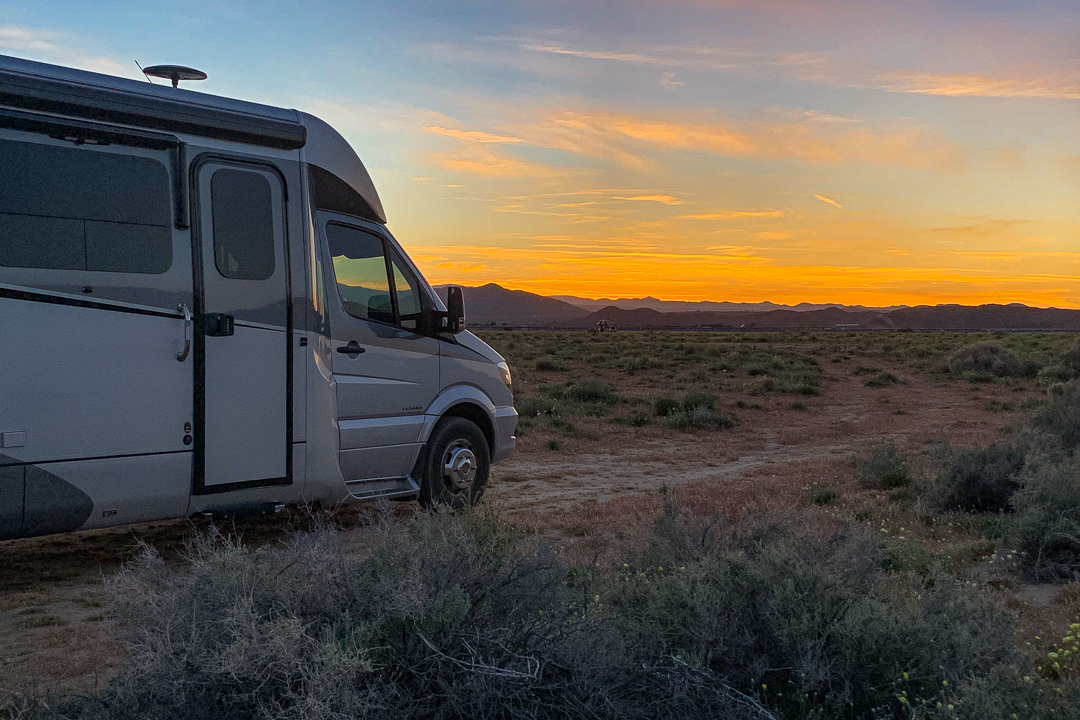
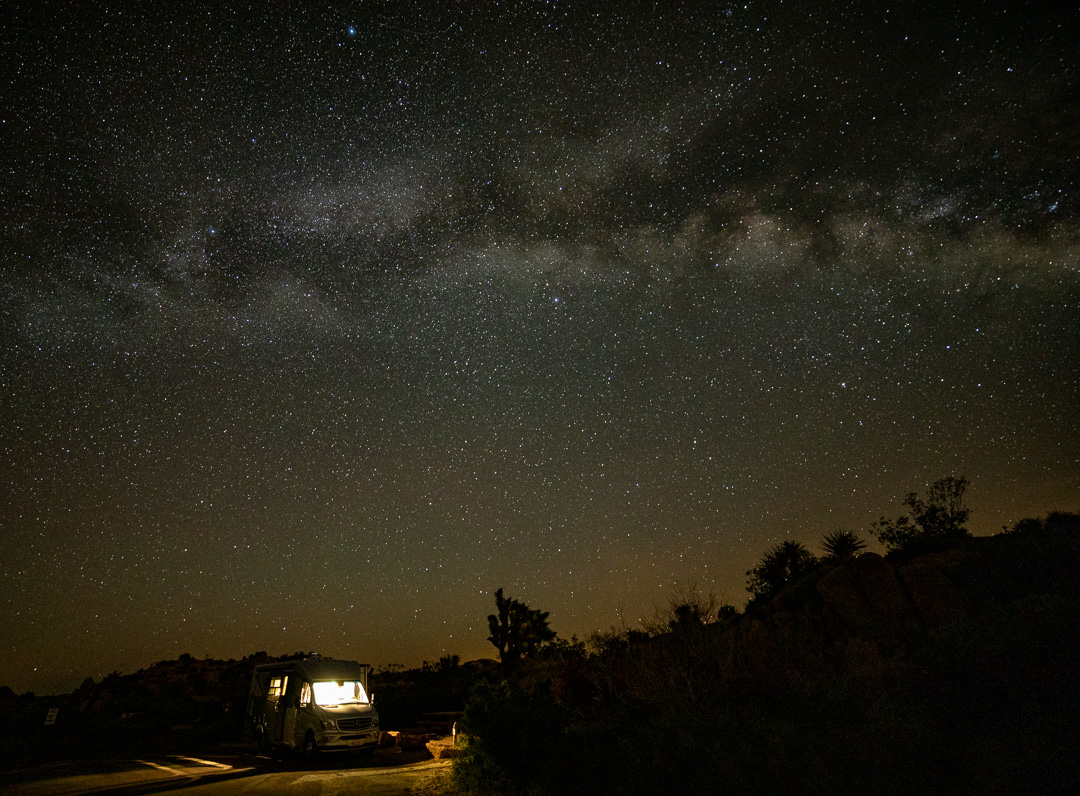
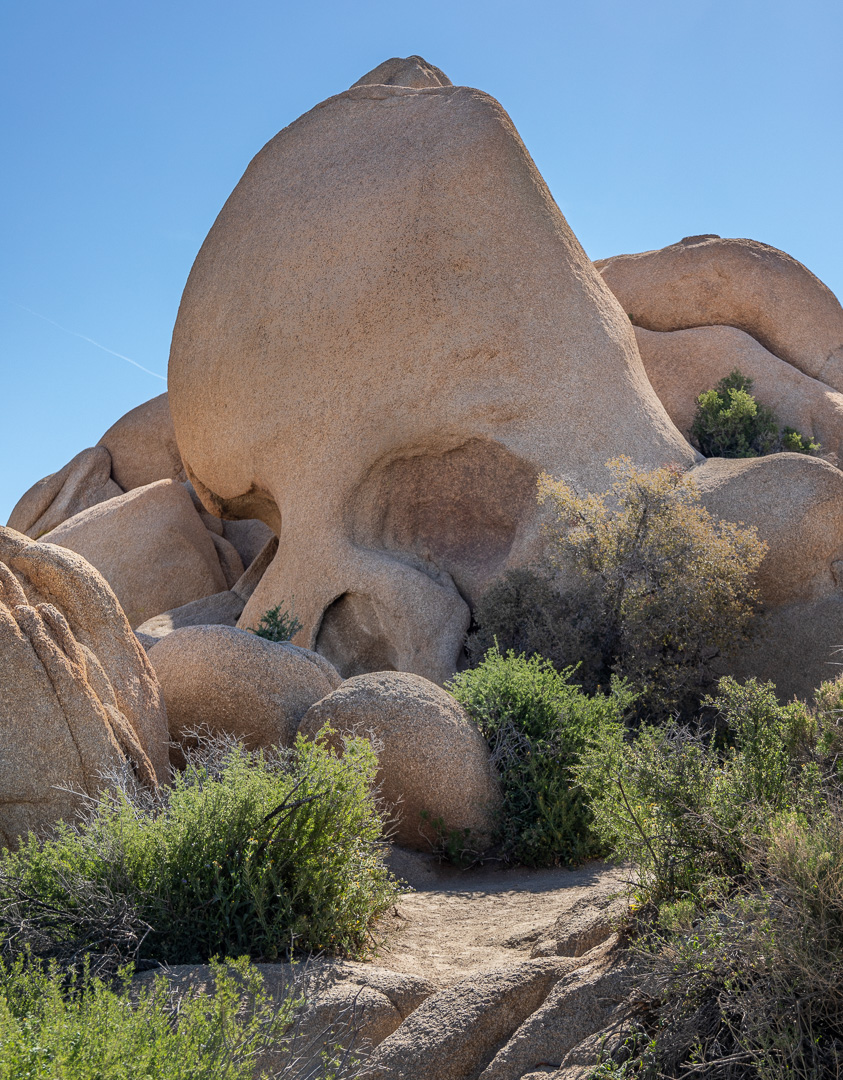
This Park
Rocks
Our first stop in the park was Skull Rock. From the picture, it’s pretty obvious how it got its name. We did an easy, short hike around Skull Rock including some light scrambling. It was still fairly early in the morning, so the crowds hadn’t gotten crazy yet. As we drove throughout the park, we saw lots of rock climbers doing some pretty incredible work, way beyond anything we’d try. We settled for stopping at Keys View which overlooks the San Andreas Fault. You can actually see the line in the earth, plus it makes a great place for a sunset view. Our best hike of the trip was the roughly 3 mile trek up Ryan Mountain, the highest point in the park. We were leaving for Machu Picchu the following month, so this was a good training hike. It was pretty crowded, but well worth it to stand on top and have a great panoramic view. While the park’s trees are really unique, I think the rocks are the highlight. We stayed at the Jumbo Rocks campground, one of several they have inside the park. Reservations are hard to come by and are usually gone within minutes of coming available online. The campground was full and the setting amongst the huge boulders was excellent. If you can score a site inside the park (excluding summer), you won’t regret it.
It’s Not Really a Tree
The Joshua tree got its name from Mormon settlers who saw it as a symbol of Joshua raising his arms to God. I can see that. But, the Joshua tree is actually a succulent and not a tree. Regardless, it’s an oddity that makes the landscape of the park truly magnificent. These “trees” are unique to the Mojave Desert and can live up to 1000 years old. We got our best up close and personal look at them on a hike around Cap Rock, another of the cool rock structures in the park. There are numerous “groves” along the park road (literally Park Avenue) that depending on the time of day, can make for some excellent photos. Even though it was March, we got pretty cooked on our Lost Horse Mine hike, a 4 mile round trip hike to an old, abandoned silver mine and mill. Despite the heat, it’s an easy, picturesque and recommended hike. The other notable hike we did was to Barker Dam, a literal oasis in the middle of the desert. The stone and concrete dam forms a small pond that hosts numerous birds and feeds the nearby landscape with all kinds of beautiful plants which had their own unique blooms. Most of the park attractions to this point sit at the northern end of Joshua Tree, but we had our sights set on visiting a very unique garden more toward the southern end of the park for sunrise.
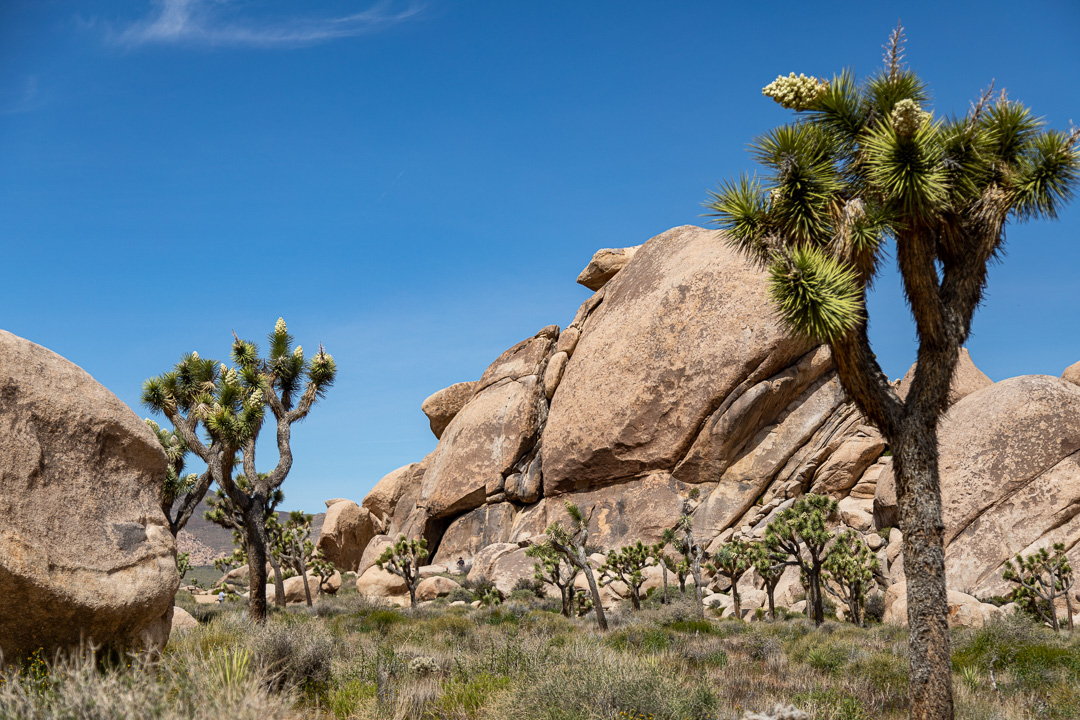
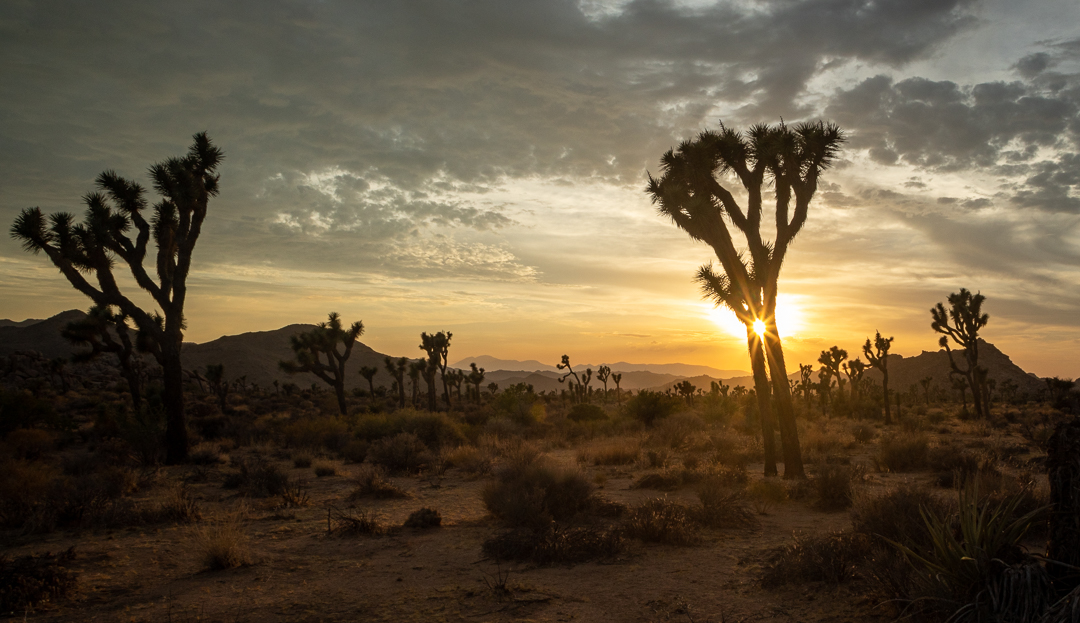
Not Your
Typical garden
On our last day, we awoke before the sun, left our Jumbo Rocks campsite, and headed south to the Cholla Cactus Garden. This was another one of a kind sight, with a concentrated growth of these cacti (I had to look up the plural of cactus) and many other colorful plants. The path is a well defined boardwalk and you definitely do not want to touch one of these cactus. Their tiny needles supposedly stick to everything. Fortuantely we took heed of the warnings and were careful. You can tell from the pictures that this has earned its recommendation as one of the best sunrises in the park. Don’t miss it.
Like Death Valley, Joshua Tree is way more than you think. The diversity of life and topography make it a great visit. And even with its proximity to the population of SoCal, the night skies are excellent. The crowds can be bothersome, but avoid the weekends and be patient. If you want to camp, and you should, be sure to get a reservation 6 months in advance. All in all, it was a great visit and a successful maiden voyage for Cousin Eddie. I know we’ll be back.
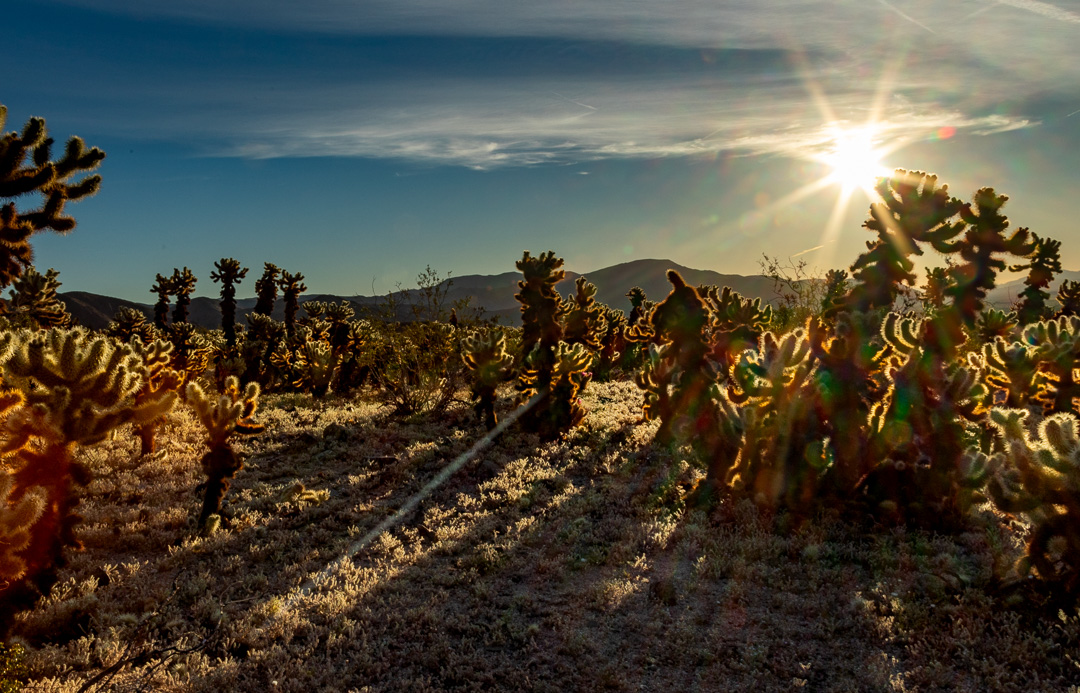
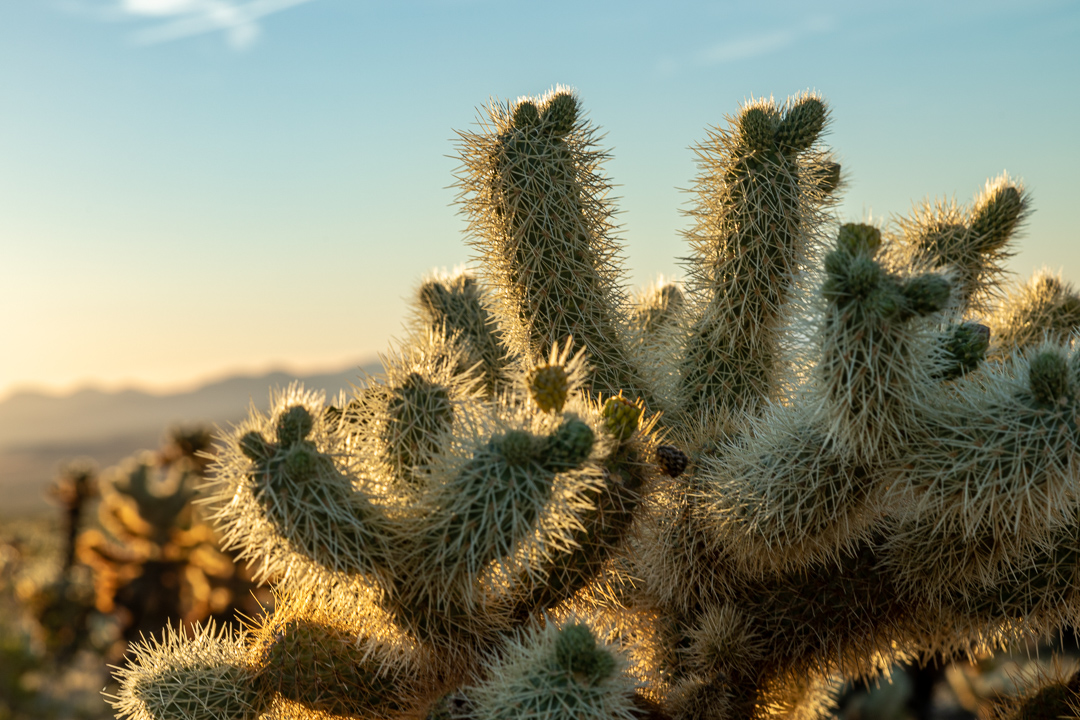
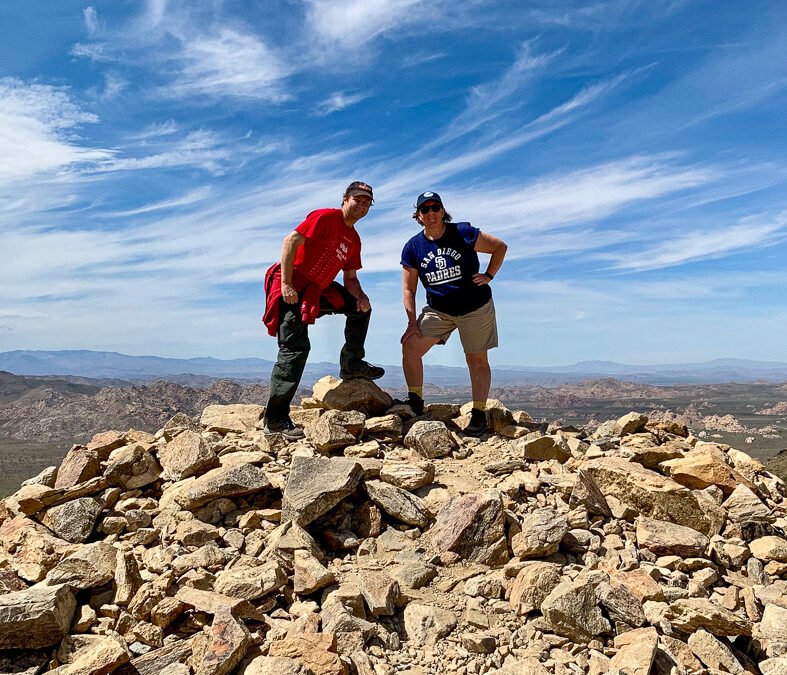
congrats and enjoy. look forward to seeing your adventures and figuring out where we go next!